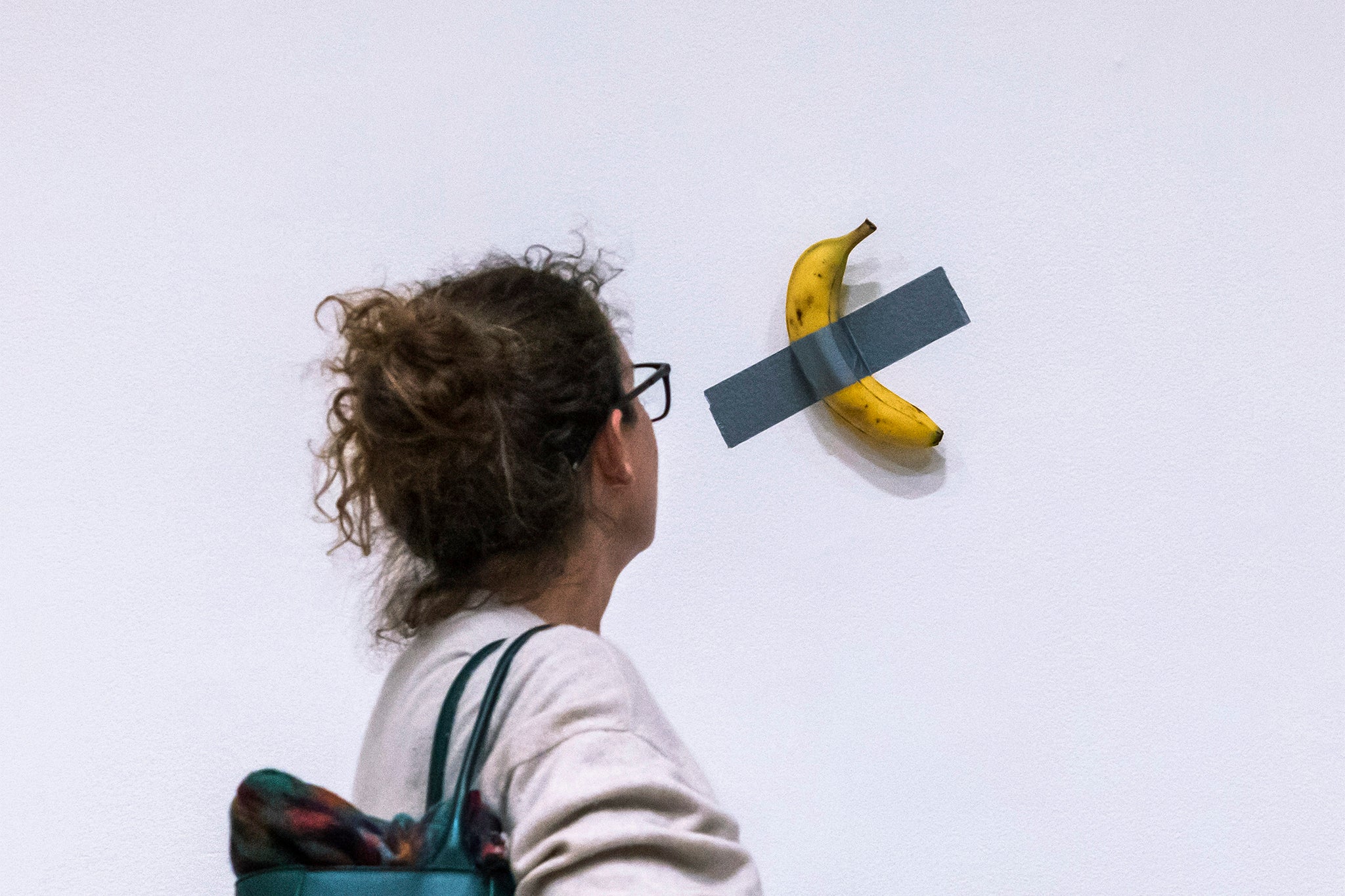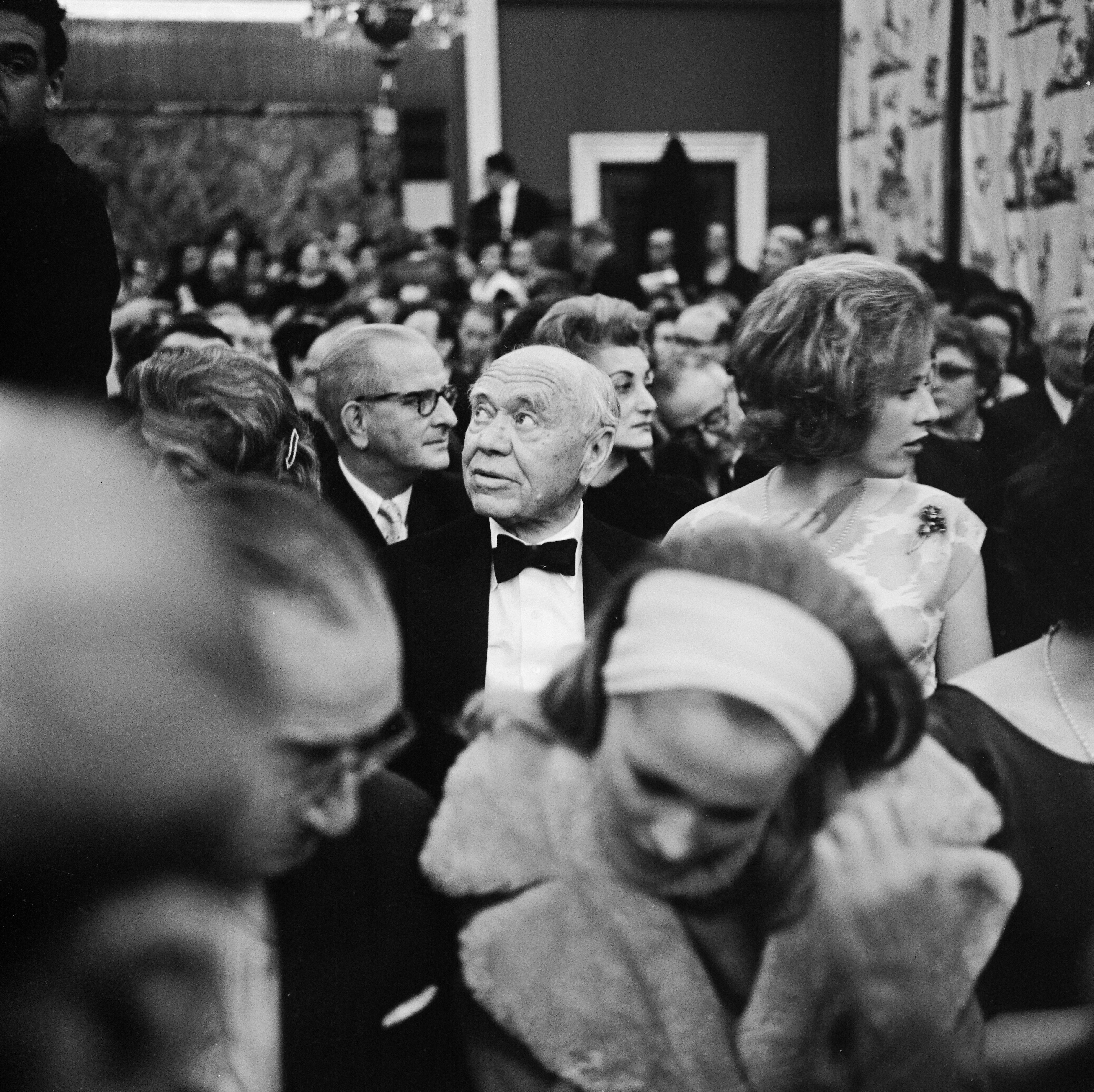The Independent's journalism is supported by our readers. When you purchase through links on our site, we may earn commission.
How the art world became a gallery of clever rogues
As a banana taped to a wall is sold for millions at an international art auction, former chair of Sotheby’s UK and British art historian, James Stourton, looks at the scandals, cockney traders and raffish vibe that have made the art scene into the colourful place it is today

I was in the art world for 32 years, ending up as the UK chair of Sotheby’s from 2006 to 2012. My career spanned dramatic changes of taste, saw great masterpieces sold, and witnessed scandals of one kind or another. When I joined Sotheby’s in 1979, Peter Wilson, the firm’s chair, had made London the art market’s indisputable world centre almost overnight when he staged the Goldschmidt impressionism auction at Sotheby’s in 1958.
The wealthy wanted impressionists as much as their predecessors had wanted Lord Duveen’s grand old masters. Establishing the first “event” sale of the modern era, Wilson persuaded Americans to sell French paintings in London, often back to America. Technology, the telephone, and the arrival of the transatlantic jet air service helped to make London the global centre of the art market and Sotheby’s the first international auction house.
If Sotheby’s is the lynchpin, the London art trade was a glorious gallery of clever amateurs, great scholars, brilliant émigrés, grandees with a flair for trade, and an array of cockney traders and flashy buyers.
The smartest of the Bond Street dealers who had traditionally controlled the international market was Agnew’s, selling old masters at the highest level. Below them, the trade had a happy-go-lucky, raffish atmosphere.
Anybody wishing to buy or see modern art in London during the Fifties and Sixties went to the Marlborough Gallery. Other Cork Street dealerships were warm and small, but Marlborough was international, focused on marketing and profits, and the artists loved it. The gallery’s founders, Frank Lloyd and Harry Fischer, made London an international centre for contemporary art, conquering and creating the template for the modern gallery system.
Lloyd and Fischer, both Austrian-Jewish, fled the Anschluss in 1938 and after a spell of internment on the Isle of Man, they met in the Pioneer Corps. Marooned in Britain, Fischer became depressed and one day put his head on a railway line. Lloyd reminded him that it was Sunday and there were no trains until Thursday. Their collaboration began, it was said, with a scheme to buy doughnuts from the village during the day and sell them at the camp in the evening.
Marlborough, like Sotheby’s, was bent on world domination. Lloyd however overreached himself when Mark Rothko died in 1970 and left 798 paintings in his estate. Grossly undervaluing the estate, Lloyd bought 100 paintings for $1.8m paid over 13 years without interest. The scandal severely damaged the Marlborough brand.

During the late 1970s, the art world was rocked by a fakes scandal and the cockney forger, Tom Keating, kept the nation entertained. A painter/restorer with an engaging, twinkly manner and a bushy white beard, Keating felt he had not been given his due by the art establishment and bore a grudge.
Optimism rather than crookedness was probably the dealers’ most characteristic failing, because, with far fewer reference books or any art historical training, they relied on their instincts to back their judgements. The ensuing court case put the art world, rather than the forger, on trial. Keating was acquitted and the affair revealed how unpopular the trade had become with the public.
Christopher Gibbs and Carlton Hobbs were the brightest lights of the Pimlico Road taste. They showed eclectic and theatrical flair with Sicilian or Portuguese pieces, introducing an “exotic” element into the otherwise staid world of furniture. It turned out that Hobbs was faking his furniture, and was dramatically exposed when he fell out with his “restorer”. Gibbs, described as “part Montesquieu, part Beau Brummell and part Baudelaire”, appealed to young collectors and the pop generation. Mick Jagger relied on him to decorate his multiple houses, and he unquestionably gingered up the market, taking it from the Swinging Sixties to the world of interiors.

Of all the dealers in London, Robin Symes had the most extraordinary trajectory, developing the antiquities market from a few thousand dollars to $30m apiece. For two decades he virtually owned the market. Faced with the open chequebooks of stellar clients in the USA, Symes’s main problem was supply. A seemingly respectable, hugely successful dealer, he led a double life as the front for a massive looting industry.
In 1988, Symes offered the Getty Museum a larger-than-life-size statue of a Greek goddess believed to represent Aphrodite, found in Sicily in the late 1970s. After it was illicitly shipped to Switzerland, Symes bought it for $400,000 and dreamt up a Swiss provenance with forged documentation. He asked the museum for $24m for the sculpture, making it the most expensive piece of ancient art on the market. Symes’s fall came when his partner died, and his in-laws wanted their share of the business. Exposed, he went to prison, although not for looting but for perjury.
Despite its scandals, London was far and away the most reliable art market in the world, with many dealers of great integrity and expertise – take Giuseppe Eskenazi, for example. The zenith of London’s position at the centre of the international art trade came when Christie’s sold Van Gogh’s Sunflowers in 1987 for £24.7m.

At nearly three times the previous world record, Sunflowers was however also the last time a record for the most expensive painting would be achieved in London. The sale marked the end of London’s dominance, and the beginning of the huge rise in auction prices for artists such as Van Gogh and Picasso that mostly took place in New York over the next decade.
With the withdrawal of Japanese buyers in the autumn of 1990, the London art market collapsed. When the market woke up again it was contemporary art that swept all before it, sold at galleries anywhere from Cork Street to Hoxton.
New collectors wanted Tracey Emin instead of Thomas Gainsborough, a step change that represented the greatest shift in taste of the period. A group of predominantly Goldsmiths students known firstly as the “Brit Pack” and then as the YBAs, were on hand to provide art to a new generation.
In the 1980s the Cork Street galleries seemed impossibly remote to emerging artists. Not content with this, Damien Hirst and his fellow artists decided to bypass the gallery system and promote themselves. In August 1988 they opened Freeze, an exhibition that would achieve legendary status at an empty ex-Port of London Authority building.

The YBAs gained wider public recognition with Sensation, the 1997 Royal Academy exhibition, and a small number of them, Hirst especially, became part of the canon of contemporary art collecting. Never in the history of British art has an artist, who initially set out to prove he did not need the art trade, so comprehensively seduced and disrupted the art establishment. Within two decades, Hirst’s takeover held Charles Saatchi, the Royal Academy, Tate Modern, White Cube, and finally, Sotheby’s, in thrall to his energetic talents.
The founding of Tate Modern crowns London’s transition from world centre of old master sales to contemporary art city. Concorde’s demise in 2003 meant that American collectors could no longer make a convenient day trip to London to bid at auction. The internet vastly expanded art buying beyond New York and London, to salerooms all over the world, and regional auctioneers multiplied the number of clients viewing their sales.
For dealers, the internet and high-res digital images did away with the shopfront, and art agents flourished. Art became the centrepiece of an international circus promoted by fairs and masterminded by celebrity curators.
At the millennium, a new species of dealer arrived: big international conglomerates with teams of salespeople and huge finance. Larry Gagosian is the trailblazer for this kind of empire-building, an aggressive operator with a global presence.
Hauser & Wirth, Zwirner, White Cube and Pace all followed, setting up shop in London. In many ways, Gagosian represents the new art world as much as Sotheby’s did in the 1960s. If London continued to thrive as a centre of the art market in the first part of the 21st century, it is because of its attraction to Arab sheikhs, oligarchs and the other super-rich of the world.
James Stourton is the author of ‘Rogues and Scholars: Boom and Bust in the London Art Market 1945-2000’, out now






Join our commenting forum
Join thought-provoking conversations, follow other Independent readers and see their replies
Comments